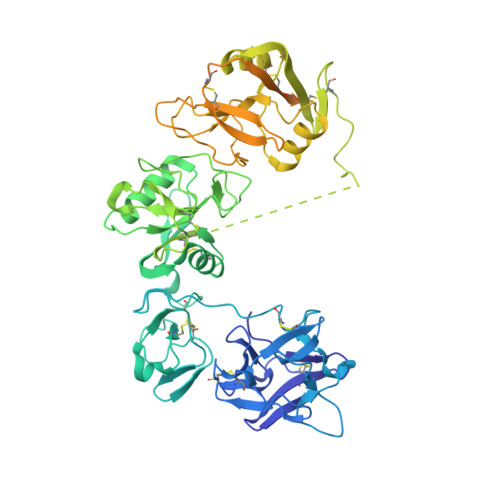Structural Insights into the pH-Dependent Conformational Change and Collagen Recognition of the Human Mannose Receptor
Hu, Z., Shi, X., Yu, B., Li, N., Huang, Y., He, Y.(2018) Structure 26: 60-71.e3
- PubMed: 29225077
- DOI: https://doi.org/10.1016/j.str.2017.11.006
- Primary Citation of Related Structures:
5XTS, 5XTW - PubMed Abstract:
Mannose receptor (MR, CD206) is an endocytic receptor on microphages and dendritic cells. It recognizes multiple ligands and plays important roles in regulating immune responses and maintaining glycoprotein homeostasis. However, the structure and functional mechanism of MR remain unclear. Here we determine the crystal structures of the N-terminal fragments of MR and reveal the potential binding mode of collagen on the fibronectin II domain. The SAXS and other biophysical data suggest that MR adopts an extended conformation at physiological pH and undergoes conformational changes as pH decreases, resulting in a compact conformation in an acidic environment. Moreover, biochemical data show that MR binds to collagen in a Ca 2+ -enhanced manner at physiological pH, whereas Ca 2+ has no effect on the binding at acidic pH. These results provide a model for the dynamic mechanism of MR regarding its ligand binding and release during the recycling between cell surface and endosomes.
- State Key Laboratory of Molecular Biology, National Center for Protein Science Shanghai, Shanghai Science Research Center, CAS Center for Excellence in Molecular Cell Science, Shanghai Institute of Biochemistry and Cell Biology, Chinese Academy of Sciences, University of Chinese Academy of Sciences, 333 Haike Road, Shanghai 201210, China.
Organizational Affiliation:

















